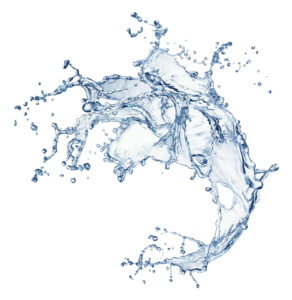 Up until now, the world has viewed water as naturally existing in three separate phases: gas, liquid, and ice. But now, scientists have found that there may be a fourth phase of this interesting molecule that has the potential to change how we view water as a whole.
Up until now, the world has viewed water as naturally existing in three separate phases: gas, liquid, and ice. But now, scientists have found that there may be a fourth phase of this interesting molecule that has the potential to change how we view water as a whole.
According to an international group of scientists, liquid water is not just one liquid, but two. Anders Nilsson, a Swedish scientist and head of the water research team reports to the Washington Post that his team was able to physically show the transition between two different forms of liquid water, something that has never been done before.
To do this, the team shot X-rays on a specific type of ice, known as amorphous ice, when it was transitioning from high to low densities at very low temperatures. During this time, the temperature was around minus 226 Fahrenheit, and the X-rays were able to show that both the low and high-density liquid molecules had different reactions to the imaging system. The X-rays showed a scattering of the water when the ice became a highly-dense, viscous liquid, which is the stage of melting before it fully becomes a liquid. After this change, it becomes a less-dense, more viscous liquid.
In other words, the water that is melted from amorphous ice isn’t just the one form of liquid we drink and use in our daily lives. It has two forms at different densities, which feel and act quite unique to any other molecule.
To put this change in perspective, Nilsson explained that it is easier to envision pouring different types of water into a glass. Since the difference in density between the two waters is 45%, the two waters would separate much like oil and water when mixed. The higher density water would be on the bottom, and there would be quite a large gap between it and the other phase.
It is important to consider that only 1% of the Earth’s water is suitable for drinking, and amorphous ice is not what we are used to. The water we drink every day is a crystal, meaning its molecules have arranged themselves into an organized structure. Amorphous ice, on the other hand, creates a jagged molecular chain and is not a crystal.
Known as glassy water, amorphous ice is quite unique and its structure is not only limited to water. The easiest way to compare this and why the molecular structure is important is by considering silica. For example, the crystal form of silica makes strong quartz that can withstand temperatures up to 400 degrees Fahrenheit, when amorphous silica makes fragile window glass.
The fact that water can have such complex molecular structures continues to impress scientists all over the world. This idea has even caused Nilsson’s team to go ahead and look into how normal drinking water is affected — and he says that this phenomenon still holds true. However, the changes aren’t as visible, and the fluctuation takes place on a nanoscale and is impossible to see.
Lars G.M. Pettersson also explains to the Washington Post that this study has only gotten to the tip of the iceberg when it comes to understanding water. He says:
?In a nutshell: Water is not a complicated liquid, but two simple liquids with a complicated relationship.?




